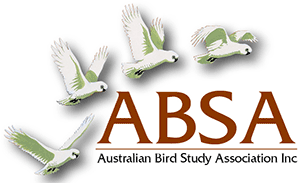SPATIAL AND TEMPORAL ASPECTS OF NESTING AND NESTING SUCCESS OF DARTER AND THREE CORMORANT SPECIES IN SOUTH-EASTERN QUEENSLAND
| Posted: |
22/06/2021 |
| Author(s): |
Neil McKilligan |
Great Cormorant
Phalacrocorax carbo, Little Black.Cormorant
Phalacrocorax sulcirostris, Little Pied Cormorant
Phalacrocorax melanoleucos and Darter
Anhinga melanogaster nested at Lake Clarendon, south-eastern
Queensland for four years after the lake filled until it fell below 12 per cent capacity. In contrast to some other
parts of Australia there was a distinct seasonality in their nesting here, with the Great and Little Black Cormorant
nesting in the cooler months of the year and the Little Pied Cormorant in spring and summer. Darter nested
throughout the year but mostly in spring and summer. Nest site heights and spacings differed among species.
Great Cormorant mostly had high, exposed, well separated nests, whereas the smaller cormorant species nested
close together in low, bushy trees. The Darter also nested low but used both bushy and open trees and could
be close to or distant from nearest neighbours. The Darter and to a lesser extent the Great Cormofant had
high nesting success and these nests fledged 2.4 and 1.8 young on average, respe.ctively. Nesting failures among
the cormorants were associated with early or late nesting or, eventually, low water level, but these do not explain
the massive losses suffered by the Little Pied and Little Black Cormorants. Although there is no direct evidence,
the circumstances surrounding their disappearance point to losses to aerial predators and not starvation, falling
from the nest or disease.
>> Download Abstract |
File Size: 132 KB
>> Download Complete PDF | File Size: 1 MB
